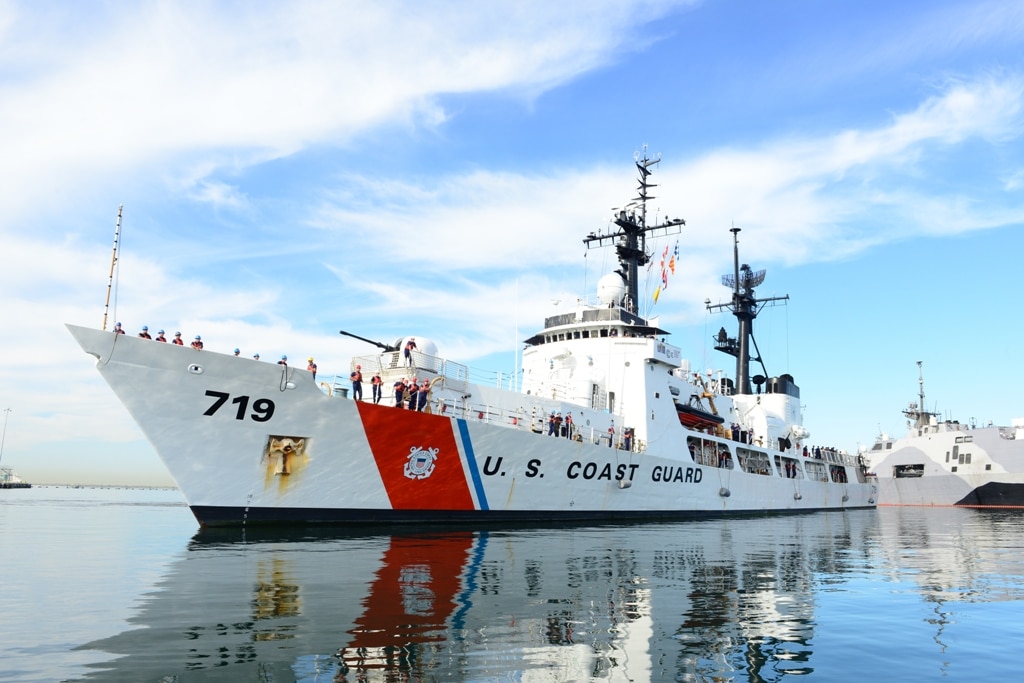
Most Americans likely assume that the mission of the US Coast Guard is to protect the coasts of the United State from maritime threats. Increasingly, though, that is no longer true, as Coast Guard vessels and personnel now routinely operate thousands of miles from the US homeland. Moreover, they frequently are not engaged in “defensive” missions, but are instead part and parcel of Washington’s arrogant force projection around the world.
The traditional missions were not always sensible or achievable ones, to be sure. During the 1920s and early 1930s, Coast Guard cutters were tasked with trying to intercept shipments of liquor trying to reach thirsty consumers in the United States. Not surprisingly, that mission proved to be utterly futile and frustrating. More recently, the Coast Guard (along with other agencies, such as the Drug Enforcement Administration) has pursued a similar quixotic effort to intercept vessels carrying cargoes of marijuana, cocaine, heroin, and other currently illegal drugs. Indeed, the Coast Guard itself boasts that it is “the nation’s first line of defense” against drug smugglers.
During both prohibition crusades, such efforts have proven more symbolic than substantive. Authorities confiscate only about 10 percent of the targeted contraband, and bootleggers and drug traffickers simply write-off such losses as part of the normal cost of doing business. Attempts to hype successful intercepts do not change that economic reality.
The Coast Guard’s level of success on another mission is scarcely better. Although most illegal migrants try to enter the United States over land (primarily through the US border with Mexico), a significant number attempt to enter by landing in boats of their own or as the human cargo of professional smugglers. An unlucky minority are intercepted, but most people fleeing poverty and violence in their home countries for a better life in the United States reach their destination, despite the Coast Guard’s best efforts.
As misguided as some of those traditional missions might be, they at least involve operations in waters close to the United States. However, more and more of the Coast Guard’s time, budget, and personnel are devoted to operations far from America’s shores. Late last month, a Coast Guard cutter, the USCGC Hamilton entered the Black Sea as part of the US Navy’s show of strength against Russia. According to a Navy press release, that part of the voyage took place “after Hamilton conducted logistics visits to Naples, Italy and Rota, Spain. The US Coast Guard is conducting a routine deployment in US Sixth Fleet, working alongside Allies, building maritime domain awareness, and sharing best practices with partner nation navies and coast guards.” That doesn’t sound like a mission that had any relevance to the defense of America’s coasts.
Wall Street Journal reporter Gordon Lubold likewise missed the underlying irony in the lead paragraph of his April 26, 2021, story about another Coast Guard operation: “A group of boats from Iran’s elite Islamic Revolutionary Guard Corps harassed two US Coast Guard ships earlier this month in the Persian Gulf.” Later, the story mentioned that US military officials charged that one Iranian vessel had come within 70 yards of the US ship in “unsafe and unprofessional” maneuvers. Neither Lubold (nor anyone else) bothered to ask what a US Coast Guard ship was doing 6,000 miles from home operating as part of a hostile display of force close to another country’s coastline. An objective observer might conclude that the Iranian ships were the ones defending their country from a maritime threat.
The Coast Guard is even more active in the western Pacific as part of Washington’s effort to contain China’s power. In late 2020 and early 2021, two of the service’s most advanced cutters were deployed to those waters. Wall Street Journal reporters Lucy Craymer and Ben Kesling noted that their location was “nearly 4,000 miles closer to Shanghai than it is to San Francisco.” In 2019, a Coast Guard cutter, the USCGC Bertholf, even transited the extraordinarily sensitive Taiwan Strait to show US military backing for Taiwan’s resistance to China’s growing pressure. Lyle Morris, a senior policy analyst at the Rand Corporation, asserts that “the biggest transition [in US security strategy in the Pacific] has been the Coast Guard’s more overt signaling about its role in the great power competition with China.”
Some of the official rationales for these new missions are transparently disingenuous. The US Coast Guard cutter Kimball just completed a multi-week mission to “counter illegal fishing” in the “Philippine Sea.” That body of water is much better known as the South China Sea, and the ship was there as tangible evidence of Washington’s support for Manila in its increasingly tense territorial dispute with China over islands there.
One should be able to insist that the architects of Washington’s imperial foreign policy at least practice truth in labeling. It is no longer clear that the Coast Guard’s dominant focus is to protect America’s coasts. Even though the service is officially part of the Department of Homeland Security, it increasingly operates as an adjunct of the Navy in projecting US power around the world. It is an Orwellian euphemism to portray it as an agency dedicated to coastal defense when it routinely performs such offensive functions thousands of miles from home.
Reprinted with permission from Antiwar.com.

